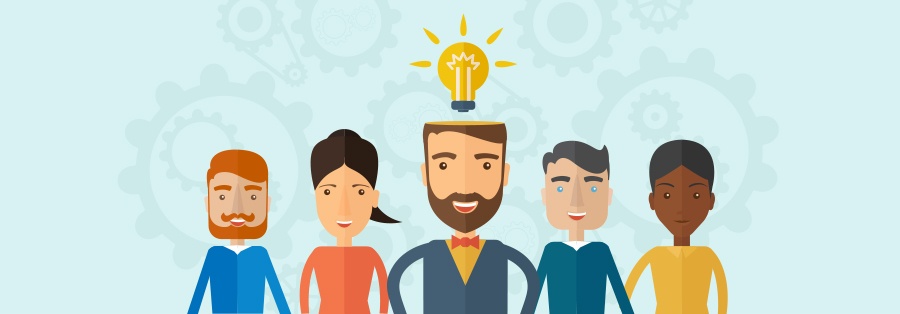
Creativity is organisations' last competitive advantage. Why? Because business has never been as fast-paced, disruptive, competitive and complex as it is now.
There is a clear business case for a creative mindset. Creativity differentiates businesses. It allows them to adapt faster and more effectively, it reduces costs and increases engagement, boosts efficiencies and ultimately creates more value in organisations. It also starts and stops with the workforce.
Organisations must realise that creativity is not just for creative “types”. Creativity can – and must – be learned by everyone.
It needs to be part of everything that businesses do, from creating new business models to leadership, processes to customer service and engagement.
And the way to do that is to build a creative mindset across the entire organisation. Here’s how Mr Ingenious did it...
Understand what creativity is
Mr Ingenious wanted a creative team. But he also wanted a productive team. When he saw team members surfing the internet or chatting about what he considered weren’t work issues, he called them up on it.
What he didn’t realise was that creativity can look like the opposite of productivity. But it does not mean that it’s not as important to organisations as productivity.
Creativity is about honing the random, disparate thoughts that often occupy our subconscious brains into unique and novel ideas. It’s combining divergent thinking – the spontaneous, non-linear generation of ideas – with convergent thinking – the logical, speedy and accurate solving of problems by recognising concepts and focusing on stored information.
Assess the individual capabilities of your team members
Each member of Mr Ingenious’ team had the skills of a marketing professional. They’d either joined the company already with qualifications and experience from other organisations, or they’d been trained up within the department. But they were all different when it came to creativity.
Everybody has the capacity to be creative and innovative. But people do it in different ways. Some are really good at asking the right questions to stimulate change. Some are talented at interpreting insights and what they mean.
Some can effectively generate their own ideas. Some are best at analysing ideas to work out the best ways forward. And some excel at helping others to generate ideas. Organisations must map out their creative DNA in order to enable a creative mindset.
Show that your organisation values creativity
Mr Ingenious knew that the he had to demonstrate to his team that he valued creativity. He worried that creativity was not measurable in the same way as productivity is but recognised that it was crucial for the department to operate as effectively as possible.
If organisations really want to be creative they need to demonstrate a belief in the business that creativity is something that is always on and the door is always open. Leaders need to set boundaries, of course, but they need to show in their own behaviour that they value creativity. Creativity must never be left to a brainstorming day. Nor must it be considered time-wasting.
Train people to be creative
His experience had taught Mr Ingenious that brainstorming events disengaged his team-members and closed off their creativity. Instead he needed to give people confidence to be creative.
This means training people to dwell on even a germ of an idea and have the confidence to know that they will get closer to a clear solution. It means coaching people to be curious and not worried about making mistakes. It means changing processes so people aren’t bogged down by distractions or discouraged from having conversations.
Make creativity part of everything your team does
Mr Ingenious realised that setting aside time for his team to be creative or to brainstorm would not work. In fact this would do the opposite and shut down creativity.
Instead he needed to ensure that his team were deploying creativity in everything that they did. Whether they were presenting to clients, writing, forward planning or dealing with external stakeholders, creativity had to be embedded in their processes and outcomes.
On a practical level, this means making sure people are asking the right questions to inspire change in processes and practices, generating new ideas and evaluating them effectively, and using feedback as a learning process. It also means creating and executing new and successful propositions.
Takeaways:
Discover how to develop a creative mindset in your organisation with the help of High Performance Coach Matt Follows (Nike, Honda, Coca Cola) and learn what Samsung’s head of learning and development, Europe, Lucien Dulak, did. Download…The Little Book For... The Creative Brain. How to unlock employee potential, drive innovation, and become a truly creative organisation.
How would you like to start a conversation?